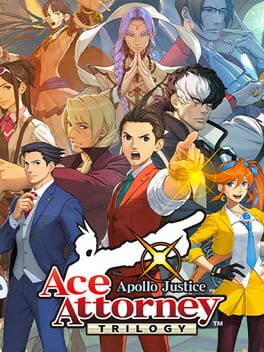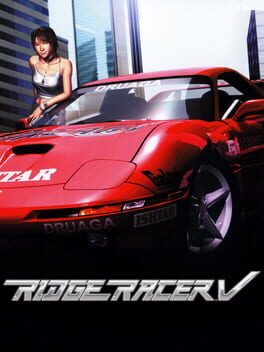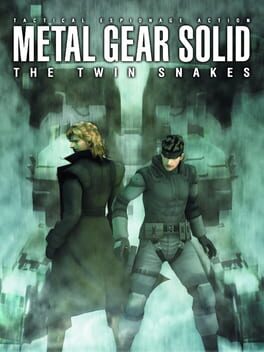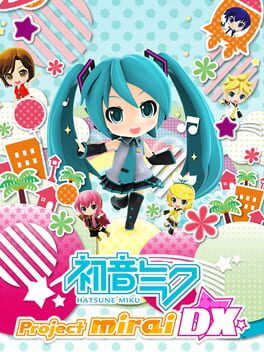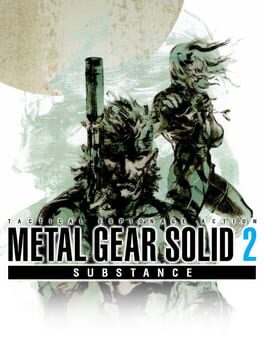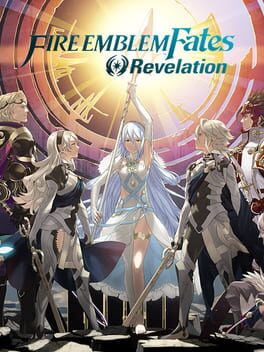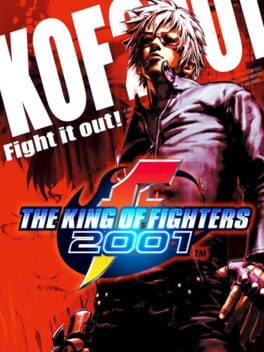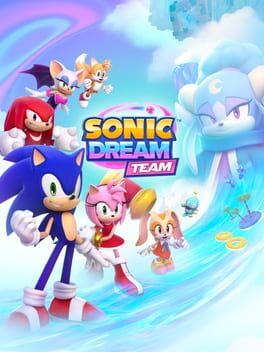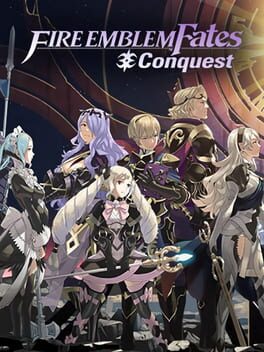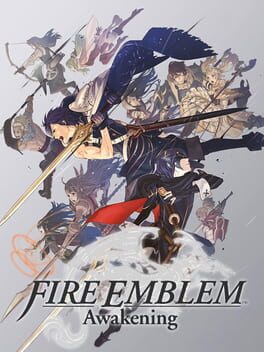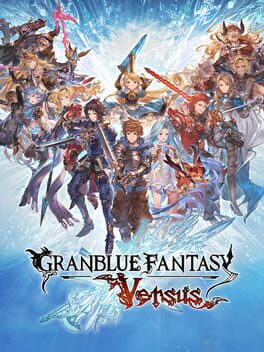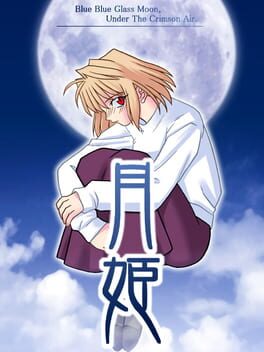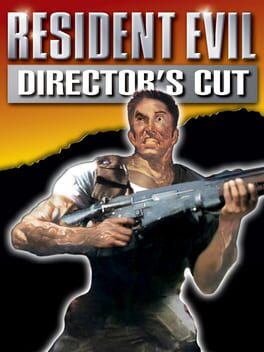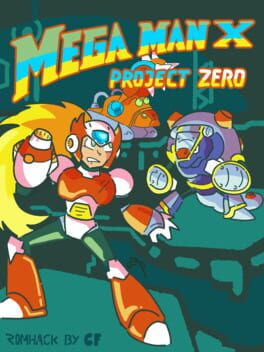Reddish
2004
I think a term commonly associated with romance/sol animanga and games is “wish fulfillment.” Now, from my experience, it's a term usually met with some level of disdain or condescension. “Wow what a loser, they need this thing to feel good about themselves.” And, sure, I can understand where that attitude comes from, in fact I'm like that sometimes too. But I feel it's not that simple. People come from different backgrounds, places, and circumstances. Sometimes what we need is comfort from something, even if it isn't real.
Clannad, among many, many other beloved visual novels is boiled down to the common “your friends and family are important, your life is worth living” morals, but is it a bad thing to be so commonly communicated? I would assume that Maeda and the many other writers at Key are trying to convey this, and even if they were or not, intention does not always align with found purpose. Tomoya Okazaki, our protagonist, is a great stand in for players like me to some degree. He's still his own character, but I think him being a loner to align with the usual “wish fulfillment” protagonist role really works to its benefit. No matter your background or role, there is worth in finding friends and family, whether it be genetic or found. It finally gives us purpose to those who feel so aimless in life. Clannad is not simply “wish fulfillment” at play. It's inspiring us to fulfill those wishes ourselves, and fulfill the wishes of others.
I’ve seen complaints about Clannad’s core structure before, as for some people the routes are “not interconnected enough”. But is that a problem? In my opinion, anyway, Clannad is an anthology of the multiple “what if” scenarios surrounding Okazaki’s journey in life. While Nagisa’s route is what leads to the true ending of the story, it doesn’t make the other routes pointless. Regardless of what is the “true” outcome of the story, your experiences and how you see these characters develop will always live on with the player. You get to see Okazaki give these people true happiness in life, and by the true ending, he is repaid for everything he’s done. While in gameplay the route system is a little rough around the edges with much needed polish, I think playing with a guide allows for a very smooth experience.
Playing this after my most prior Key visual novel experience, that being AIR, really opened my eyes to how well thought out and executed much of Clannad is. While AIR suffers from an overly ambitious but ultimately meaningless structure, Clannad takes a safer approach and cuts out any filler. Jun Maeda and his team really wanted to make up for the mistakes of AIR, and you can really tell from how much more polish is applied to this game. Despite this being one of the longest games I’ve ever played, Clannad rarely falls victim to artificial padding. The game gives you and makes proper use of the “skip already read text” feature, which makes hopping into your next route a very quick and easy experience. It helps that the game is split into 10+ routes that all vary in length, meaning I don’t think the game can ever burn you out from a scenario. Each route (with two exceptions, one being entirely optional) is very different overall so nothing is samey either. I’d also like to make note of the amount of content on offer, Clannad is not only long from the main game but has TONS of little secrets and extra blurbs of dialogue to discover, it really feels like the team wanted to put as much as they could onto the disc.
And that’s the overall thing I love about Clannad: it’s very polished. Not perfect, but very damn close. Clannad may seem safe or tropey, but it uses those aspects and pushes them to a wonderful and engaging extent. The current top review tries to make fun of fans of this game and I’d have to say that this person probably has never experienced joy in their life. None of the huge visual novels I’ve played so far have been flops, and Clannad is no exception either. In fact, out of the three (Higurashi, Tsukihime, Clannad) I would say this is my new favorite, and knowing that Key still has some fantastic games in their catalog for me to still try out (Kanon, Little Busters!, and Rewrite) has me so immensely excited. But none of those games, or any visual novels in the future will take away what a special experience Clannad was for me. I had taken a long break from reviews and I needed to get out of that slump, and this game was what inspired me to write a little something again, especially seeing how none of the longer reviews about this game on this site are in good faith. I wanted to fix that. Thank you for reading, and if this review manages to get even one person to fully play through this game, I’ll be happy.
Clannad, among many, many other beloved visual novels is boiled down to the common “your friends and family are important, your life is worth living” morals, but is it a bad thing to be so commonly communicated? I would assume that Maeda and the many other writers at Key are trying to convey this, and even if they were or not, intention does not always align with found purpose. Tomoya Okazaki, our protagonist, is a great stand in for players like me to some degree. He's still his own character, but I think him being a loner to align with the usual “wish fulfillment” protagonist role really works to its benefit. No matter your background or role, there is worth in finding friends and family, whether it be genetic or found. It finally gives us purpose to those who feel so aimless in life. Clannad is not simply “wish fulfillment” at play. It's inspiring us to fulfill those wishes ourselves, and fulfill the wishes of others.
I’ve seen complaints about Clannad’s core structure before, as for some people the routes are “not interconnected enough”. But is that a problem? In my opinion, anyway, Clannad is an anthology of the multiple “what if” scenarios surrounding Okazaki’s journey in life. While Nagisa’s route is what leads to the true ending of the story, it doesn’t make the other routes pointless. Regardless of what is the “true” outcome of the story, your experiences and how you see these characters develop will always live on with the player. You get to see Okazaki give these people true happiness in life, and by the true ending, he is repaid for everything he’s done. While in gameplay the route system is a little rough around the edges with much needed polish, I think playing with a guide allows for a very smooth experience.
Playing this after my most prior Key visual novel experience, that being AIR, really opened my eyes to how well thought out and executed much of Clannad is. While AIR suffers from an overly ambitious but ultimately meaningless structure, Clannad takes a safer approach and cuts out any filler. Jun Maeda and his team really wanted to make up for the mistakes of AIR, and you can really tell from how much more polish is applied to this game. Despite this being one of the longest games I’ve ever played, Clannad rarely falls victim to artificial padding. The game gives you and makes proper use of the “skip already read text” feature, which makes hopping into your next route a very quick and easy experience. It helps that the game is split into 10+ routes that all vary in length, meaning I don’t think the game can ever burn you out from a scenario. Each route (with two exceptions, one being entirely optional) is very different overall so nothing is samey either. I’d also like to make note of the amount of content on offer, Clannad is not only long from the main game but has TONS of little secrets and extra blurbs of dialogue to discover, it really feels like the team wanted to put as much as they could onto the disc.
And that’s the overall thing I love about Clannad: it’s very polished. Not perfect, but very damn close. Clannad may seem safe or tropey, but it uses those aspects and pushes them to a wonderful and engaging extent. The current top review tries to make fun of fans of this game and I’d have to say that this person probably has never experienced joy in their life. None of the huge visual novels I’ve played so far have been flops, and Clannad is no exception either. In fact, out of the three (Higurashi, Tsukihime, Clannad) I would say this is my new favorite, and knowing that Key still has some fantastic games in their catalog for me to still try out (Kanon, Little Busters!, and Rewrite) has me so immensely excited. But none of those games, or any visual novels in the future will take away what a special experience Clannad was for me. I had taken a long break from reviews and I needed to get out of that slump, and this game was what inspired me to write a little something again, especially seeing how none of the longer reviews about this game on this site are in good faith. I wanted to fix that. Thank you for reading, and if this review manages to get even one person to fully play through this game, I’ll be happy.
2000
Ridge Racer V: Launch Titles and The Lost Magic of Console Generations
There's nothing quite like zooming through the streets of Ridge City at night time, while "Euphoria" plays on the radio.
As of recently I've been on a bit of a Ridge Racer kick again, most notably putting my attention back on the fifth main installment in the series. The best way to describe R5 is bold. It's a game screaming with confidence and promise, amazingly optimized at 60fps and boasting insane visuals for the year 2000.
But that's just right, R5 was a launch title for the PS2, one of the highest selling consoles of all time. And yet, it fell under the radar compared to many other games on the system, even when it came out (I'm assuming that goes to Tekken Tag Tournament being the more appealing Namco offering). It's buried under the popularity of the entries in the series both before and after, being sandwiched in between Ridge Racer Type 4 and Ridge Racer 2004. It's overall a somewhat forgotten game, it didn't even sell that well and has never even been ported a single time… and yet, I find it one of the most profound launch titles of all time.
R5 represents a time when the leap in console generations was greater and mattered so much more. While its predecessor RRT4 was a game about looking towards the next millennium and the future of racing, R5 is the future, as insanely flashy UI and hard techno beats blast from the television screen. It boasts the technical prowess of this new generation of gaming in every single way it can. It's fucking AWESOME.
But the sad truth is that it doesn't feel like that anymore with the last two leaps in console generations. The jump in hardware doesn't land as much because we've reached a point in graphical fidelity that can't go much further than looking more realistic and being able to handle more of said demanding visuals better. This isn't entirely the fault of modern game developers, it's simply just the sad reality of how fast digital technology has evolved. And sure, maybe I am biased… I don't despise modern games but I certainly aren't very passionate for them aside from more stylistic ones that feel like old games. But it simply makes me sit back and wonder how the hell the next generation of systems could really do anything major to impress me, something to sell me on the next console and go “holy fuck, gaming has evolved.” It makes me a bit sad I missed seeing the insane revolution that was the fifth and sixth generation consoles.
Ridge Racer V is not the most impactful launch title, nor would it have been the most important pack-in title had it been one. But what R5 is, is a game that showed the promise and passion of the sixth generation of gaming hardware, and paved the way for the most important console generation of all time.
There's nothing quite like zooming through the streets of Ridge City at night time, while "Euphoria" plays on the radio.
As of recently I've been on a bit of a Ridge Racer kick again, most notably putting my attention back on the fifth main installment in the series. The best way to describe R5 is bold. It's a game screaming with confidence and promise, amazingly optimized at 60fps and boasting insane visuals for the year 2000.
But that's just right, R5 was a launch title for the PS2, one of the highest selling consoles of all time. And yet, it fell under the radar compared to many other games on the system, even when it came out (I'm assuming that goes to Tekken Tag Tournament being the more appealing Namco offering). It's buried under the popularity of the entries in the series both before and after, being sandwiched in between Ridge Racer Type 4 and Ridge Racer 2004. It's overall a somewhat forgotten game, it didn't even sell that well and has never even been ported a single time… and yet, I find it one of the most profound launch titles of all time.
R5 represents a time when the leap in console generations was greater and mattered so much more. While its predecessor RRT4 was a game about looking towards the next millennium and the future of racing, R5 is the future, as insanely flashy UI and hard techno beats blast from the television screen. It boasts the technical prowess of this new generation of gaming in every single way it can. It's fucking AWESOME.
But the sad truth is that it doesn't feel like that anymore with the last two leaps in console generations. The jump in hardware doesn't land as much because we've reached a point in graphical fidelity that can't go much further than looking more realistic and being able to handle more of said demanding visuals better. This isn't entirely the fault of modern game developers, it's simply just the sad reality of how fast digital technology has evolved. And sure, maybe I am biased… I don't despise modern games but I certainly aren't very passionate for them aside from more stylistic ones that feel like old games. But it simply makes me sit back and wonder how the hell the next generation of systems could really do anything major to impress me, something to sell me on the next console and go “holy fuck, gaming has evolved.” It makes me a bit sad I missed seeing the insane revolution that was the fifth and sixth generation consoles.
Ridge Racer V is not the most impactful launch title, nor would it have been the most important pack-in title had it been one. But what R5 is, is a game that showed the promise and passion of the sixth generation of gaming hardware, and paved the way for the most important console generation of all time.
My introduction to vocaloid outside of playing a tad of Project Diva Extend, and it’s a fun and cutesy take on the project series, I really adore the chibi style and characters. The game is insanely easy for a Project Series game (going off of what I know of the other entries), I got A and S ranks on every song on my first attempt on normal mode. This game does suffer from some bloat issues, notably the fact that there are SIX difficulties for each song (3 on tap mode, 3 on button mode), made worse by having to unlock hard mode by beating the song on normal first. The actual music at first turned me off a bit but vocaloid actually is pretty solid once you get used to the voices, and I found myself liking it quite a bit eventually. There’s also a mode where you can give the vocaloids money and you can see what things they spend it on, alongside being able to decorate their humble abode. ALSO also there’s a puyo puyo mode so I think that makes the game a 6/10 minimum.
This is a scattershot review and I apologize, I really just wanted to yap for a bit about this game because I honestly enjoyed it much. Vocaloid is a weird facet of 2000’s-2010’s otaku culture that I’ve wanted to dig into for a long time so it was nice finally looking into it, I actually went ahead and got both the original Project Diva and Mega Mix (both on Switch and PC) to play later because I had so much fun with this one. I haven’t felt the best recently so I needed something like this to lean on for a bit. Miku is gender
This is a scattershot review and I apologize, I really just wanted to yap for a bit about this game because I honestly enjoyed it much. Vocaloid is a weird facet of 2000’s-2010’s otaku culture that I’ve wanted to dig into for a long time so it was nice finally looking into it, I actually went ahead and got both the original Project Diva and Mega Mix (both on Switch and PC) to play later because I had so much fun with this one. I haven’t felt the best recently so I needed something like this to lean on for a bit. Miku is gender
MGS2 is a hard title to write about because there are already like, several 800 page essays about the game and its themes on this site alone, I’m not even factoring in video essays and other sites and articles. So why am I writing this regardless? Well, the answer is quite simple, I can’t get this game off my mind even a week after playing it, and as possibly redundant this review could be, I need to get it out there.
Playing MGS2 for the first time, after seeing a playthrough in my earlier teens and wanting to try it myself for nearly half a decade, was cathartic. I could not be more glad that I finally got to try this. While I was pretty terrible at the stealth gameplay even on the lowest difficulty, just the satisfaction of making progress and exploring every little nook and cranny of the Big Shell made it for me. While it doesn’t have the heavy winter night atmosphere of Shadow Moses that defined the previous game, Big Shell is beautiful in its quaintness. It’s simple but has effective coloring and theming, and honestly how could anyone hate the almost tranquill outside areas with the bright skies, blue oceans, and crying seagulls?
I mentioned that I watched a full playthrough of this game several years ago, and I actually revisited it recently to see if it held up. While I still enjoyed it, it felt surreal seeing that even in 2018 many people didn’t like or respect the direction that MGS2 took with its heavier reliance on themes than sensibility. “Overshot” was the description that hit me the most. While, sure, there are things about this game that are fucking ridiculous (honestly despite my high praise for this game I do have choice words about the Liquid hand thing), I think the absurdity was intentional and defines MGS2. It’s not for everyone, which I understand, but it seems that even just a couple years ago 2 was given a lot of shit for its direction, whereas now I feel that it’s almost universally praised as a masterpiece.
Lastly what I wanted to touch up on was how much I despise the nihilistic circlejerk that surrounds this game’s final codec call. While in the moment it can be crushing and feel like something to make the player feel used, it’s like people completely ignored everything that happened after the final boss. Or even in the codec call itself, where Raiden pretty much says “nah, I’m good” despite everything he’s been told trying to devalue him and dispose of him after his “purpose” has been fulfilled. Both of Snake’s speeches afterwards are the icing on the cake. Honestly during the rewatch of them I did shed a few tears, it hits a lot harder when I’ve given more thought into it and it's an uplifting message that leaves the story on a high note after the brutality of the final codec. Snake essentially goes “hey, there’s a lot going on and misinformation will spread, but don’t freak out yet, you’re your own person and you get to decide what you do or don’t believe in,” how you could see all that and then only hyperfixate on “kojima predicted the internet and AI lol!” is not only ignorant, but blatantly disrespectful to everything else going on. There’s more meaning to MGS2 and its main gimmick was not just “predicting the future.” It’s about individuality and finding what we believe in. Becoming nihilistic and focusing on all the bad in the world is exactly what the GW wants you to think. Why can't some recognize that?
It was nice finally going through this amazing, amazing game firsthand. I’m taking a bit of a break before I tackle 3 because I wanted to dedicate more time to thinking about this game. It’s something that I don’t think will ever leave my mind anytime soon. There’s a lot I didn’t cover here, and it’s simply because many people have already said it or I don’t even know where to begin in wording it, but I am totally up for discussion if you’d like to ask.
Thank you for reading, and a happy new year.
Choose your own legacy.
It’s for you to decide.
it's up to you.
Playing MGS2 for the first time, after seeing a playthrough in my earlier teens and wanting to try it myself for nearly half a decade, was cathartic. I could not be more glad that I finally got to try this. While I was pretty terrible at the stealth gameplay even on the lowest difficulty, just the satisfaction of making progress and exploring every little nook and cranny of the Big Shell made it for me. While it doesn’t have the heavy winter night atmosphere of Shadow Moses that defined the previous game, Big Shell is beautiful in its quaintness. It’s simple but has effective coloring and theming, and honestly how could anyone hate the almost tranquill outside areas with the bright skies, blue oceans, and crying seagulls?
I mentioned that I watched a full playthrough of this game several years ago, and I actually revisited it recently to see if it held up. While I still enjoyed it, it felt surreal seeing that even in 2018 many people didn’t like or respect the direction that MGS2 took with its heavier reliance on themes than sensibility. “Overshot” was the description that hit me the most. While, sure, there are things about this game that are fucking ridiculous (honestly despite my high praise for this game I do have choice words about the Liquid hand thing), I think the absurdity was intentional and defines MGS2. It’s not for everyone, which I understand, but it seems that even just a couple years ago 2 was given a lot of shit for its direction, whereas now I feel that it’s almost universally praised as a masterpiece.
Lastly what I wanted to touch up on was how much I despise the nihilistic circlejerk that surrounds this game’s final codec call. While in the moment it can be crushing and feel like something to make the player feel used, it’s like people completely ignored everything that happened after the final boss. Or even in the codec call itself, where Raiden pretty much says “nah, I’m good” despite everything he’s been told trying to devalue him and dispose of him after his “purpose” has been fulfilled. Both of Snake’s speeches afterwards are the icing on the cake. Honestly during the rewatch of them I did shed a few tears, it hits a lot harder when I’ve given more thought into it and it's an uplifting message that leaves the story on a high note after the brutality of the final codec. Snake essentially goes “hey, there’s a lot going on and misinformation will spread, but don’t freak out yet, you’re your own person and you get to decide what you do or don’t believe in,” how you could see all that and then only hyperfixate on “kojima predicted the internet and AI lol!” is not only ignorant, but blatantly disrespectful to everything else going on. There’s more meaning to MGS2 and its main gimmick was not just “predicting the future.” It’s about individuality and finding what we believe in. Becoming nihilistic and focusing on all the bad in the world is exactly what the GW wants you to think. Why can't some recognize that?
It was nice finally going through this amazing, amazing game firsthand. I’m taking a bit of a break before I tackle 3 because I wanted to dedicate more time to thinking about this game. It’s something that I don’t think will ever leave my mind anytime soon. There’s a lot I didn’t cover here, and it’s simply because many people have already said it or I don’t even know where to begin in wording it, but I am totally up for discussion if you’d like to ask.
Thank you for reading, and a happy new year.
Choose your own legacy.
It’s for you to decide.
it's up to you.
The first mainline KOF entry to not be associated with the original SNK branding, KOF 2001 is often regarded as one of, if not the worst entry in the series. Literally nobody cares about this game. Like nobody. Regardless, I still wanted to give a little spotlight on this entry as its placement in the series and development is quite fascinating.
After the original SNK went bankrupt, development of KOF was handed to a Korean developer Eolith. They would handle the series for a measly two entries before former SNK employees would form Playmore and buy back the license. As a result, the Eolith era of KOF is the shortest and most bizarre in the series. The first giveaway being the presentation. Coming off of the heels of KOF ‘00, ‘01 is amazingly unpolished in the presentation department by comparison, delivering some of the worst graphics and music in the franchise. Most of the character portraits in the game are drawn horribly, having rather odd expressions or lack of proportion or anatomy. Of course, overly-exaggerated character art isn’t inherently bad, but it just looks so ugly here. Once again, compared to the delicious ‘00 character art this looks like a rough sketch and not a finished drawing. Now, I will say that the promotional art drawn by Nona is very solid, and the PS2 port gave it the proper spotlight by replacing it over the arcade artwork. It doesn’t hold a candle to the charm and surrealness of Shinkiro’s art, but it offers a different interpretation of these characters and I greatly appreciate it.
Music-wise… Jesus Christ. It’s not my least favorite OST but most of the tracks are either bland or annoying in the arcade version. They don’t share the creativity of previous soundtracks in the series, by being super repetitive and overly similar in instrumentation. Now some of the instruments and samples chosen are very punchy, and they have potential, but the tracks are just not making good use of them. The arranged OST, which is exclusive to the Japan only NESTS saga PS2 collection, is… still meh. It’s literally the same tracks but with CD quality instruments, so I’d say it is better, but it doesn’t fix any of the music compositionally.
Moving to the gameplay…. eh? It’s fine. The striker system in this game is sorta interesting and it does have a similar appeal to ‘00 in how broken they are, but the charm is lost when all of those extra strikers were removed. The game’s attempt at a CVS1/2 ratio system is also neat, but overall kind of forgettable. Overall, the game is pretty fun on a casual level and nothing else. Definitely not helped by being sandwiched in between ‘00 and ‘02, both being games that exude more creativity.
I don’t talk about story much but the NESTS saga is my favorite in the KOF series because of its original characters and atmosphere, so it is a bit unfortunate that the third and final game of the arc doesn’t have what I liked about its older siblings. The whole idea of the tournaments in this arc being shady underground fights are removed when the stages mostly compose of giant crowds cheering in broad daylight. Not helped by the fact that narratively, everyone is supposed to hate the tournament at this point, so why are these people here? Igniz is a funny villain. I like the note that the ending leaves on with K’ and Kula. That’s it.
If I had a way to describe ‘01, it’s that it has so many elements I enjoy, and it was clearly made by people who wanted to care. Not to get deep into discussing the development cycle but the tl;dr is that Eolith told BrezzaSoft to make the game in like, a year, while also having a ton of control over what was and wasn’t allowed, mostly enforcing a lot of fanservicey elements. It does lead to some cool stuff, like Angel and May Lee were suggested by Eolith, both of which became fan favorites, and it was pretty neat seeing the Orochi saga Japan team come back together for the arc finale. The game has attitude, it’s got spunk, cool aesthetics (especially through its UI) but not the time or budget to make it fully realized. Not terrible by any means, but it’ll always be disappointing that this game didn’t get the development resources it deserved. Luckily, Eolith would drop one more KOF game after this, and while it does suffer a similar “not getting the resources it needed” problem, it’s one of the best entries in the series, and I plan on writing up on it next.
After the original SNK went bankrupt, development of KOF was handed to a Korean developer Eolith. They would handle the series for a measly two entries before former SNK employees would form Playmore and buy back the license. As a result, the Eolith era of KOF is the shortest and most bizarre in the series. The first giveaway being the presentation. Coming off of the heels of KOF ‘00, ‘01 is amazingly unpolished in the presentation department by comparison, delivering some of the worst graphics and music in the franchise. Most of the character portraits in the game are drawn horribly, having rather odd expressions or lack of proportion or anatomy. Of course, overly-exaggerated character art isn’t inherently bad, but it just looks so ugly here. Once again, compared to the delicious ‘00 character art this looks like a rough sketch and not a finished drawing. Now, I will say that the promotional art drawn by Nona is very solid, and the PS2 port gave it the proper spotlight by replacing it over the arcade artwork. It doesn’t hold a candle to the charm and surrealness of Shinkiro’s art, but it offers a different interpretation of these characters and I greatly appreciate it.
Music-wise… Jesus Christ. It’s not my least favorite OST but most of the tracks are either bland or annoying in the arcade version. They don’t share the creativity of previous soundtracks in the series, by being super repetitive and overly similar in instrumentation. Now some of the instruments and samples chosen are very punchy, and they have potential, but the tracks are just not making good use of them. The arranged OST, which is exclusive to the Japan only NESTS saga PS2 collection, is… still meh. It’s literally the same tracks but with CD quality instruments, so I’d say it is better, but it doesn’t fix any of the music compositionally.
Moving to the gameplay…. eh? It’s fine. The striker system in this game is sorta interesting and it does have a similar appeal to ‘00 in how broken they are, but the charm is lost when all of those extra strikers were removed. The game’s attempt at a CVS1/2 ratio system is also neat, but overall kind of forgettable. Overall, the game is pretty fun on a casual level and nothing else. Definitely not helped by being sandwiched in between ‘00 and ‘02, both being games that exude more creativity.
I don’t talk about story much but the NESTS saga is my favorite in the KOF series because of its original characters and atmosphere, so it is a bit unfortunate that the third and final game of the arc doesn’t have what I liked about its older siblings. The whole idea of the tournaments in this arc being shady underground fights are removed when the stages mostly compose of giant crowds cheering in broad daylight. Not helped by the fact that narratively, everyone is supposed to hate the tournament at this point, so why are these people here? Igniz is a funny villain. I like the note that the ending leaves on with K’ and Kula. That’s it.
If I had a way to describe ‘01, it’s that it has so many elements I enjoy, and it was clearly made by people who wanted to care. Not to get deep into discussing the development cycle but the tl;dr is that Eolith told BrezzaSoft to make the game in like, a year, while also having a ton of control over what was and wasn’t allowed, mostly enforcing a lot of fanservicey elements. It does lead to some cool stuff, like Angel and May Lee were suggested by Eolith, both of which became fan favorites, and it was pretty neat seeing the Orochi saga Japan team come back together for the arc finale. The game has attitude, it’s got spunk, cool aesthetics (especially through its UI) but not the time or budget to make it fully realized. Not terrible by any means, but it’ll always be disappointing that this game didn’t get the development resources it deserved. Luckily, Eolith would drop one more KOF game after this, and while it does suffer a similar “not getting the resources it needed” problem, it’s one of the best entries in the series, and I plan on writing up on it next.
2023
Upon revisit I honestly enjoyed Conquest a lot more than I had expected. A lot of things about the gameplay and unit investment clicked a lil more, and I actually put effort into pairing up characters for more gen 2 units this time which really carried my run in retrospect. Writing-wise I still skipped the story because… Well it isn’t good, but I did like the characters outside of their plot involvement quite a bit more on revisit. I read any new supports I didn’t have in my first run, which didn’t change my mind on some of the cast but I mostly liked it. Plus, the gen 2 kiddos are just so sweet and fun in their own right… I really loved the Soleil and Forrest support chain :) (in english, at least, never read the japanese one). I’m not even hyping up these goobers as peak fiction or some shit, I just found them to be more likable than at first glance. Still doesn’t save the story but like. I’ve learned to just tolerate it in favor of liking the characters as individuals and combined with the gameplay.
I definitely got a lot better at actually playing Conquest this time, like I mentioned I think putting more effort into gen 2 really helped (Master Ninja Soleil and Velouria in general are so fun!), but I also had a lot of fun trying out other units I never touched like glass cannon Peri in all her glory. My Corrin this run got unbelievably screwed this run though, I have no idea what I did wrong but she fell behind HARD and I’ll have to research the optimal thing to do with her for next time. Overall Conquest requires a metric shitton of game knowledge to even scratch at the surface at, and I think my lack of knowing how to inflate stats through pairups, skills, foods, forge etc really bit me by the last 10 or so chapters. I didn’t realize what I had done wrong but clearly I wasn’t playing correctly, so I’ll have to dive into getting advice and stuff for my next playthrough. That being said, the game was still damn fun, and I felt pretty satisfied at clearly getting a bit better this time around.
Conquest is a cool game. It’s not the best, and I have no idea if I’ll ever get good at it, but I’m pretty glad it exists. It fixed a lot of problems I had with Awakening on a mechanical level while also delivering a lot of characters I honestly still really like.
Ophelia/10
I definitely got a lot better at actually playing Conquest this time, like I mentioned I think putting more effort into gen 2 really helped (Master Ninja Soleil and Velouria in general are so fun!), but I also had a lot of fun trying out other units I never touched like glass cannon Peri in all her glory. My Corrin this run got unbelievably screwed this run though, I have no idea what I did wrong but she fell behind HARD and I’ll have to research the optimal thing to do with her for next time. Overall Conquest requires a metric shitton of game knowledge to even scratch at the surface at, and I think my lack of knowing how to inflate stats through pairups, skills, foods, forge etc really bit me by the last 10 or so chapters. I didn’t realize what I had done wrong but clearly I wasn’t playing correctly, so I’ll have to dive into getting advice and stuff for my next playthrough. That being said, the game was still damn fun, and I felt pretty satisfied at clearly getting a bit better this time around.
Conquest is a cool game. It’s not the best, and I have no idea if I’ll ever get good at it, but I’m pretty glad it exists. It fixed a lot of problems I had with Awakening on a mechanical level while also delivering a lot of characters I honestly still really like.
Ophelia/10
Replayed this on hard/classic and this is NOT it bro
The one that everyone feels obligated to mention “saved the franchise” which sure, I appreciate, but I’m ngl Awakening only saved this series financially, from a gameplay perspective that credit goes to Conquest easily, replaying this game on hard mode with permadeath just made it apparent how weirdly and/or badly the maps and enemies are designed. Hard mode in this game just straight out sucks, stat bloated enemies and same turn reinforcements in a game where it feels like terrain bonuses don’t even matter is the absolute worst, not helped by the GBA emblem level amount of enemy spam. Map design doesn’t help either, as a lot of them aren’t even maps and are just “big open field with enemies” or “indoor map with enemies,” and objectives that mostly comprise of “KILL EVERY LAST ONE OF THEM”.
Around chapter 5 I had the realization that all of these units pale in comparison to the sheer snowball of a unit that is Robin. Yes, you can solo Awakening with any character if you want, just like FE4 or FE8, etc, but at least in those games, it felt like your non Sigurds or your non Seths could still contribute and still had a nice unit feel. And while that still sorrrta works on normal mode, it really doesn’t on hard mode because of the aforementioned stat bloated enemies. So, clearly the solution to this is to snowball all your squishy, non Robin or Frederick units up by grinding in the skirmishes, right? WRONG. Because, in hard mode, skirmishes comprise of ridiculously strong enemies, we’re talking like maps FULL of prepremoted enemies as early as chapter 5 which SUCKS. I really wanted to train up a whole team for this game but I absolutely did not have the patience to grind through all this, so I had my ultimate solution.. The Robin Juggernaut. 2 units deployed every map, class change Robin to sorcerer and around mid-game stock up on nosferatu and simply watch. I did not deploy a single other character for the rest of the entire game after chapter 10-ish, because I didn’t feel like grinding in my fire emblem game. Also worth mentioning how Robin becomes even more busted by using the game’s pairup mechanics which by itself is an insanely unfair advantage to have over the enemies (Fates would fix this by having enemies also be allowed to pairup), have Robin and Chrom pairup and you will basically never have to worry about the latter’s safety.
My play time this run totalled at 4 hours. How? Because I simply became so bored by the end, I turned off all battle animations and just started skipping enemy phase because what was there to see? And before you tell me that I wouldn’t have been bored if I did full deployment and used all my characters, I’ve done that before in my first run of the game, and my thoughts were IDENTICAL around the same point. It’s not a strategy game. It’s a JRPG on a grid, which I just don’t like outside of Sacred Stones and Echoes to an extent. The game tries to trick you into thinking it’s a TRPG with side objectives on maps by throwing in treasure chests on some maps but don’t fall for that, they’re just meant for you to waste your turns and be murdered by same turn reinforcements. It’s all just pointless.
Skipped the story too. I usually don’t reread story in a replay of an FE game unless it’s FE4 but even if I usually did I would’ve skimmed over this one most likely. I don’t hate the story of Awakening but it’s just not my thing, and lacks any sense of cohesion or interest outside of one thing: Lucina. I love Lucina fire emblem. Other than that? Plot that is trying WAY too much and saying WAY too little. It’s got the FE7 problem where shit just kinda happens and you roll with it but without the genuine feeling of going on an adventure like that game. I think the inclusion of the world map ultimately hurts giving the story a proper sense of scale, it’s fine in Echoes but in this game I feel that it takes away the feeling of being on a long journey with these characters, earlier entries usually had no map and it cemented a feeling that you can’t go back, only forward. Idk how else to describe it, but yeah Awakening doesn’t really have that.
My score for this review is more reflective of playing on hard mode or above, I’d drop a 6 at the highest in the context of normal mode but like- Awakening purely lacks anything I like about fire emblem other than the characters (which this game does have quite a few I really like!) I understand why IS went this direction for the sake of general appeal and hey, if you like this game, I’m happy for you! I’m sure if this was my first FE especially if I was like 13-15ish I would’ve loved it, but it wasn’t, and I don’t. It’s just kinda okay at best for me, and I can’t see myself replaying this unless it’s out of spite or seeing more of the gen 2 kids. Not for me.
The one that everyone feels obligated to mention “saved the franchise” which sure, I appreciate, but I’m ngl Awakening only saved this series financially, from a gameplay perspective that credit goes to Conquest easily, replaying this game on hard mode with permadeath just made it apparent how weirdly and/or badly the maps and enemies are designed. Hard mode in this game just straight out sucks, stat bloated enemies and same turn reinforcements in a game where it feels like terrain bonuses don’t even matter is the absolute worst, not helped by the GBA emblem level amount of enemy spam. Map design doesn’t help either, as a lot of them aren’t even maps and are just “big open field with enemies” or “indoor map with enemies,” and objectives that mostly comprise of “KILL EVERY LAST ONE OF THEM”.
Around chapter 5 I had the realization that all of these units pale in comparison to the sheer snowball of a unit that is Robin. Yes, you can solo Awakening with any character if you want, just like FE4 or FE8, etc, but at least in those games, it felt like your non Sigurds or your non Seths could still contribute and still had a nice unit feel. And while that still sorrrta works on normal mode, it really doesn’t on hard mode because of the aforementioned stat bloated enemies. So, clearly the solution to this is to snowball all your squishy, non Robin or Frederick units up by grinding in the skirmishes, right? WRONG. Because, in hard mode, skirmishes comprise of ridiculously strong enemies, we’re talking like maps FULL of prepremoted enemies as early as chapter 5 which SUCKS. I really wanted to train up a whole team for this game but I absolutely did not have the patience to grind through all this, so I had my ultimate solution.. The Robin Juggernaut. 2 units deployed every map, class change Robin to sorcerer and around mid-game stock up on nosferatu and simply watch. I did not deploy a single other character for the rest of the entire game after chapter 10-ish, because I didn’t feel like grinding in my fire emblem game. Also worth mentioning how Robin becomes even more busted by using the game’s pairup mechanics which by itself is an insanely unfair advantage to have over the enemies (Fates would fix this by having enemies also be allowed to pairup), have Robin and Chrom pairup and you will basically never have to worry about the latter’s safety.
My play time this run totalled at 4 hours. How? Because I simply became so bored by the end, I turned off all battle animations and just started skipping enemy phase because what was there to see? And before you tell me that I wouldn’t have been bored if I did full deployment and used all my characters, I’ve done that before in my first run of the game, and my thoughts were IDENTICAL around the same point. It’s not a strategy game. It’s a JRPG on a grid, which I just don’t like outside of Sacred Stones and Echoes to an extent. The game tries to trick you into thinking it’s a TRPG with side objectives on maps by throwing in treasure chests on some maps but don’t fall for that, they’re just meant for you to waste your turns and be murdered by same turn reinforcements. It’s all just pointless.
Skipped the story too. I usually don’t reread story in a replay of an FE game unless it’s FE4 but even if I usually did I would’ve skimmed over this one most likely. I don’t hate the story of Awakening but it’s just not my thing, and lacks any sense of cohesion or interest outside of one thing: Lucina. I love Lucina fire emblem. Other than that? Plot that is trying WAY too much and saying WAY too little. It’s got the FE7 problem where shit just kinda happens and you roll with it but without the genuine feeling of going on an adventure like that game. I think the inclusion of the world map ultimately hurts giving the story a proper sense of scale, it’s fine in Echoes but in this game I feel that it takes away the feeling of being on a long journey with these characters, earlier entries usually had no map and it cemented a feeling that you can’t go back, only forward. Idk how else to describe it, but yeah Awakening doesn’t really have that.
My score for this review is more reflective of playing on hard mode or above, I’d drop a 6 at the highest in the context of normal mode but like- Awakening purely lacks anything I like about fire emblem other than the characters (which this game does have quite a few I really like!) I understand why IS went this direction for the sake of general appeal and hey, if you like this game, I’m happy for you! I’m sure if this was my first FE especially if I was like 13-15ish I would’ve loved it, but it wasn’t, and I don’t. It’s just kinda okay at best for me, and I can’t see myself replaying this unless it’s out of spite or seeing more of the gen 2 kids. Not for me.
Played this immediately after the beta for the new game dropped (forgot that I even owned the first one for a while) and holy shit the second game is a huge improvement, and I really wouldn't mind buying it and PS Plus just because of how fun it is and how much more content it offers. Genuinely can't believe that THIS game only had 12 characters in the base roster and costed 50 dollars lmao. This isn't a great game, but it did give me Yuel, so... I enjoy it I suppose.
2000
”I am never going to play that fucking shit in my life,” I said after reading Cab’s review on Tsukhime, circa April 2022. However, regardless of telling myself that, the morbid curiosity of playing whatever this game was has lingered in my head for quite some time. Probably not helped by me getting a bit into Melty Blood at the time, alongside watching the Ufortable adaptation of Unlimited Blade Works. But, if you know me at all, the biggest roadblock was of course the adult content. Not that I mind a story reflecting sexual themes, as those are important stories to tell, but more in the fact that the way Tsukihime presents those themes is gross and immature. However, my friend DomencioDovanna let me know of a fan patch that entirely skips the pointless time sink that is the adult scenes, while still not undercutting the themes, and he helped me set it up. Thanks!
It’s truly fascinating seeing Nasu’s humble beginnings in the VN industry. While not his first written work (that would be Garden of Sinners, iirc?), it was the first of his stories to be in the Visual Novel format. Context is very important to Tsukihime’s release, as it was a game made by about less than 10 people on a shoestring budget. In fact, all of the visual assets were made by one person, that being Takahashi Takeuchi. Both his artwork alongside Nasu’s writings share nice parallels in being extremely earnest, but still very amateurish and yet to fully bloom into their greatest potential. And that’s what’s so endearing about Tsukihime. Behind the blurry photographed backgrounds, the poor handling of sexual themes, the sometimes janky spritework, the occasionally repetitive prose- there’s a clear effort here to tell a memorable story. It’s probably one of the most honest and impressive games I’ve played, and it’s that context of its development that heightens my respect for it overall.
I don’t want to delve into the story very much here, because ultimately I would like you, the reader, to see what lies under the moon yourself. It’s a story about how important the choices in our lives matter. It’s a story about overcoming our trauma and finding a greater understanding in ourselves. And yes, it is a story that is telling us that life is worth living. It has these wonderful heroines, and each route is truly unique. It’s a game that’s both comfortable yet unnerving, fills us with sorrow but also gives us joy, it can disgust us yet can be so beautiful.
If you have ever wanted to try out Tsukihime, now is the time. The english patch by mirror moon has been out for years, and even offers a SFW patch for the game as I described above. You can play it on a multitude of platforms, even including a fantastic web version that is soon to be the definitive edition of the game. The plus disc also has a translation by mirror moon, and is also worth checking out after the main game, alongside a translation of the sequel(?) Kagetsu Tohya, by Mr Fortayee. And of course, the remake is going to be getting an official translation next year, which I am very excited for! If you don’t have the patience though, there is an already existing translation patch for the Switch version by Tsukihimates.
Despite all of what I’ve said, I can’t exactly recommend Tsukihime. It’s absolutely not a game for everyone, and your enjoyment of the experience is going to vary. But I think if you can look through the cracks, you can find a fantastic narrative that may stick with you for a long time. And lastly, a thank you to Dr Delicious who sat through all of my liveposting throughout my playthrough, and gave me much more insight into the story that made me appreciate the experience even more as a whole.
” - —- Thank you. I’m glad I met you, Sensei.”
It’s truly fascinating seeing Nasu’s humble beginnings in the VN industry. While not his first written work (that would be Garden of Sinners, iirc?), it was the first of his stories to be in the Visual Novel format. Context is very important to Tsukihime’s release, as it was a game made by about less than 10 people on a shoestring budget. In fact, all of the visual assets were made by one person, that being Takahashi Takeuchi. Both his artwork alongside Nasu’s writings share nice parallels in being extremely earnest, but still very amateurish and yet to fully bloom into their greatest potential. And that’s what’s so endearing about Tsukihime. Behind the blurry photographed backgrounds, the poor handling of sexual themes, the sometimes janky spritework, the occasionally repetitive prose- there’s a clear effort here to tell a memorable story. It’s probably one of the most honest and impressive games I’ve played, and it’s that context of its development that heightens my respect for it overall.
I don’t want to delve into the story very much here, because ultimately I would like you, the reader, to see what lies under the moon yourself. It’s a story about how important the choices in our lives matter. It’s a story about overcoming our trauma and finding a greater understanding in ourselves. And yes, it is a story that is telling us that life is worth living. It has these wonderful heroines, and each route is truly unique. It’s a game that’s both comfortable yet unnerving, fills us with sorrow but also gives us joy, it can disgust us yet can be so beautiful.
If you have ever wanted to try out Tsukihime, now is the time. The english patch by mirror moon has been out for years, and even offers a SFW patch for the game as I described above. You can play it on a multitude of platforms, even including a fantastic web version that is soon to be the definitive edition of the game. The plus disc also has a translation by mirror moon, and is also worth checking out after the main game, alongside a translation of the sequel(?) Kagetsu Tohya, by Mr Fortayee. And of course, the remake is going to be getting an official translation next year, which I am very excited for! If you don’t have the patience though, there is an already existing translation patch for the Switch version by Tsukihimates.
Despite all of what I’ve said, I can’t exactly recommend Tsukihime. It’s absolutely not a game for everyone, and your enjoyment of the experience is going to vary. But I think if you can look through the cracks, you can find a fantastic narrative that may stick with you for a long time. And lastly, a thank you to Dr Delicious who sat through all of my liveposting throughout my playthrough, and gave me much more insight into the story that made me appreciate the experience even more as a whole.
” - —- Thank you. I’m glad I met you, Sensei.”
Finished my second completed playthrough of Chris’s scenario, and honestly after being so harsh on it for the past two years I think I understand it a lot more now.
It’s fair to say that most people usually enjoy Jill’s scenario far better than Chris’s, and for valid reasons too. This includes me too, actually, as it’s just a more comfortable experience to easily blast through while also starring BARRY BURTON, who couldn’t love that. She gets the bazooka, which decimates most enemies, she has a lockpick, getting the best ending is far easier, she has an easier time getting the shotgun, everything is just wildly convenient for her, and it is fun! The low difficulty of her scenario makes it more revisitable while also shorter, and I’ve played through it about 5 times now, including a run where I used no ink ribbons while finishing the game in less than 3 hours, which was a rewarding experience. But it is suspiciously too easy.
Entering Chris mode with this same mindset is like being hit with a reality check, he has it rough here. Smaller inventory, no bazooka, no lockpick, no Barry bailing you out to get the shotgun early, none of that. On paper, literally the only advantage Chris has is that he has far more health than Jill, which can be shrugged off by most players, but in my opinion it actually serves a key purpose during the early game. Since ammo for the handgun is rather sparse, and you’ll want to save most of your shells for the mid-to-late game, taking advantage of Chris’s larger health pool is actually very handy for essentially damage boosting areas with zombies that you are never gonna revisit, and believe me, Chris (at least on the standard difficulty) is REALLY tanky, and I was surprised during this revisit at how handy his durability was for this function. It also makes purely knifing some early area rooms in favor of wasting the handgun a valid strategy, because Chris can take quite a beating if your knifing is sloppy. I don’t ever see this brought up but I find it quite unique and rewarding in this context.
Chris overall I think has a better overall emphasis on the core inventory management and survival aspects of the game. Because of what little Chris can hold at a time, there were several trips I took with literally nothing on me just so I could pick everything up in an upcoming area. It was tense and in some cases could look extremely unsafe and stupid, but I find this technique very rewarding and suspenseful because I was making a major risk in favor of gaining more reward by not needing to backtrack, rather than keeping a weapon, it’s ammo, and 1-2 healing items on me because it feels more comfortable. The uncomfortability here heightens the tensity of the situation, which I would say is important in a horror game.
Despite all this praise I do have to knock the third “chapter” of the game for being extremely tedious and frustrating, that being the second mansion visit where all the hunters are occupying the area. As Jill, it's a breather because this is a perfect spot to unload all of your grenade and acid rounds on the hunters, but Chris has no such luxury, and it becomes unbearable as a result. The infamous stunlocking and instant kill attacks that these battletoads offer make for a spot that, last year, made me drop my entire Chris run. You WILL be punished here if you wasted a lot of your shells before this section (I circumvented this by beating Plant 42 with only the handgun). Now, you do get the magnum in this part of the game, which is a one hit kill on every normal enemy type in the game, but since ammo for it is rather sparse, and you most definitely want to save it for the final boss(es), it’s best to get rid of like 2-3 hunters using it in this entire section and either trying to outrun or use the shotgun on the rest. And also last to mention is the inconvenience of trying to find Rebecca when re-entering the mansion before the invisible timer goes out, which if you play poorly will result in a guaranteed bad ending and Rebecca most certainly… without a head on her shoulders to confront you.
That aside, I found this scenario to be a tightly designed and overall rewarding experience. It can be frustrating, and it will kick your ass if you play poorly. But managing to get through it gives me immense satisfaction, and I certainly plan on trying to perfect my runs in the future, because Chris’s scenario is an interesting facet of how good Resident Evil 1’s design truly is. It’s Resi 1 at it’s most tense, because of having lesser resources while also dealing with a more punishing difficulty curve. I’ve already got most of what I’ve wanted in challenging myself playing as Jill, so I find this to be the best next step. Definitely give this mode a try if you found Jill’s scenario too easy and need something to quench that thirst of needing a nore challenging experience.
It’s fair to say that most people usually enjoy Jill’s scenario far better than Chris’s, and for valid reasons too. This includes me too, actually, as it’s just a more comfortable experience to easily blast through while also starring BARRY BURTON, who couldn’t love that. She gets the bazooka, which decimates most enemies, she has a lockpick, getting the best ending is far easier, she has an easier time getting the shotgun, everything is just wildly convenient for her, and it is fun! The low difficulty of her scenario makes it more revisitable while also shorter, and I’ve played through it about 5 times now, including a run where I used no ink ribbons while finishing the game in less than 3 hours, which was a rewarding experience. But it is suspiciously too easy.
Entering Chris mode with this same mindset is like being hit with a reality check, he has it rough here. Smaller inventory, no bazooka, no lockpick, no Barry bailing you out to get the shotgun early, none of that. On paper, literally the only advantage Chris has is that he has far more health than Jill, which can be shrugged off by most players, but in my opinion it actually serves a key purpose during the early game. Since ammo for the handgun is rather sparse, and you’ll want to save most of your shells for the mid-to-late game, taking advantage of Chris’s larger health pool is actually very handy for essentially damage boosting areas with zombies that you are never gonna revisit, and believe me, Chris (at least on the standard difficulty) is REALLY tanky, and I was surprised during this revisit at how handy his durability was for this function. It also makes purely knifing some early area rooms in favor of wasting the handgun a valid strategy, because Chris can take quite a beating if your knifing is sloppy. I don’t ever see this brought up but I find it quite unique and rewarding in this context.
Chris overall I think has a better overall emphasis on the core inventory management and survival aspects of the game. Because of what little Chris can hold at a time, there were several trips I took with literally nothing on me just so I could pick everything up in an upcoming area. It was tense and in some cases could look extremely unsafe and stupid, but I find this technique very rewarding and suspenseful because I was making a major risk in favor of gaining more reward by not needing to backtrack, rather than keeping a weapon, it’s ammo, and 1-2 healing items on me because it feels more comfortable. The uncomfortability here heightens the tensity of the situation, which I would say is important in a horror game.
Despite all this praise I do have to knock the third “chapter” of the game for being extremely tedious and frustrating, that being the second mansion visit where all the hunters are occupying the area. As Jill, it's a breather because this is a perfect spot to unload all of your grenade and acid rounds on the hunters, but Chris has no such luxury, and it becomes unbearable as a result. The infamous stunlocking and instant kill attacks that these battletoads offer make for a spot that, last year, made me drop my entire Chris run. You WILL be punished here if you wasted a lot of your shells before this section (I circumvented this by beating Plant 42 with only the handgun). Now, you do get the magnum in this part of the game, which is a one hit kill on every normal enemy type in the game, but since ammo for it is rather sparse, and you most definitely want to save it for the final boss(es), it’s best to get rid of like 2-3 hunters using it in this entire section and either trying to outrun or use the shotgun on the rest. And also last to mention is the inconvenience of trying to find Rebecca when re-entering the mansion before the invisible timer goes out, which if you play poorly will result in a guaranteed bad ending and Rebecca most certainly… without a head on her shoulders to confront you.
That aside, I found this scenario to be a tightly designed and overall rewarding experience. It can be frustrating, and it will kick your ass if you play poorly. But managing to get through it gives me immense satisfaction, and I certainly plan on trying to perfect my runs in the future, because Chris’s scenario is an interesting facet of how good Resident Evil 1’s design truly is. It’s Resi 1 at it’s most tense, because of having lesser resources while also dealing with a more punishing difficulty curve. I’ve already got most of what I’ve wanted in challenging myself playing as Jill, so I find this to be the best next step. Definitely give this mode a try if you found Jill’s scenario too easy and need something to quench that thirst of needing a nore challenging experience.

